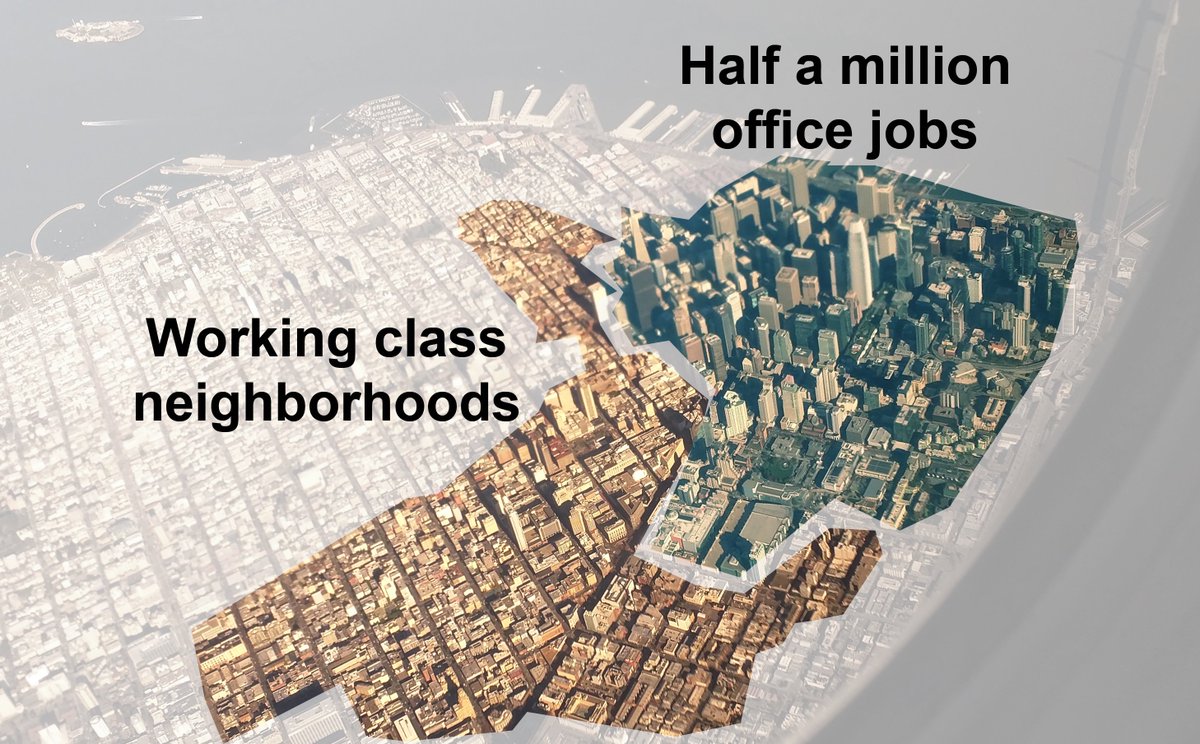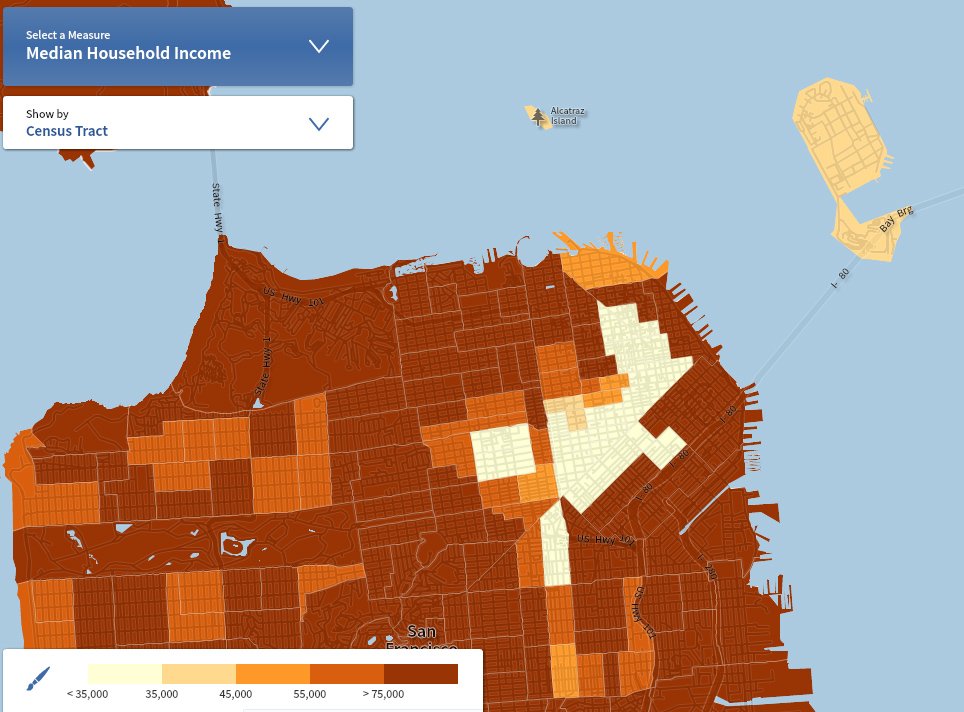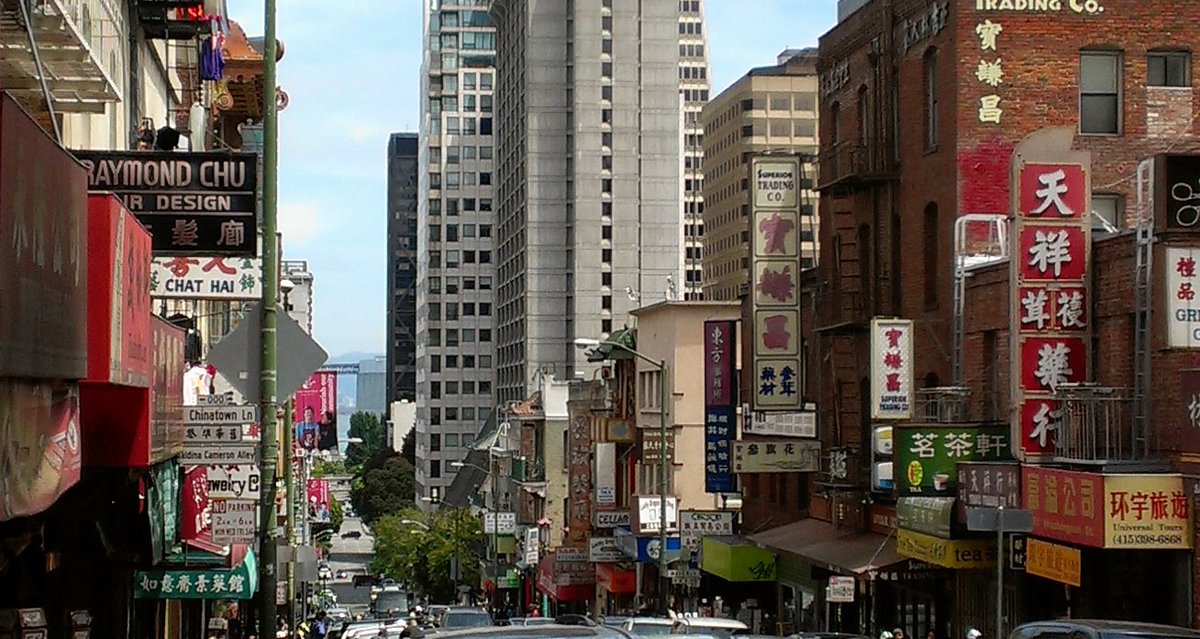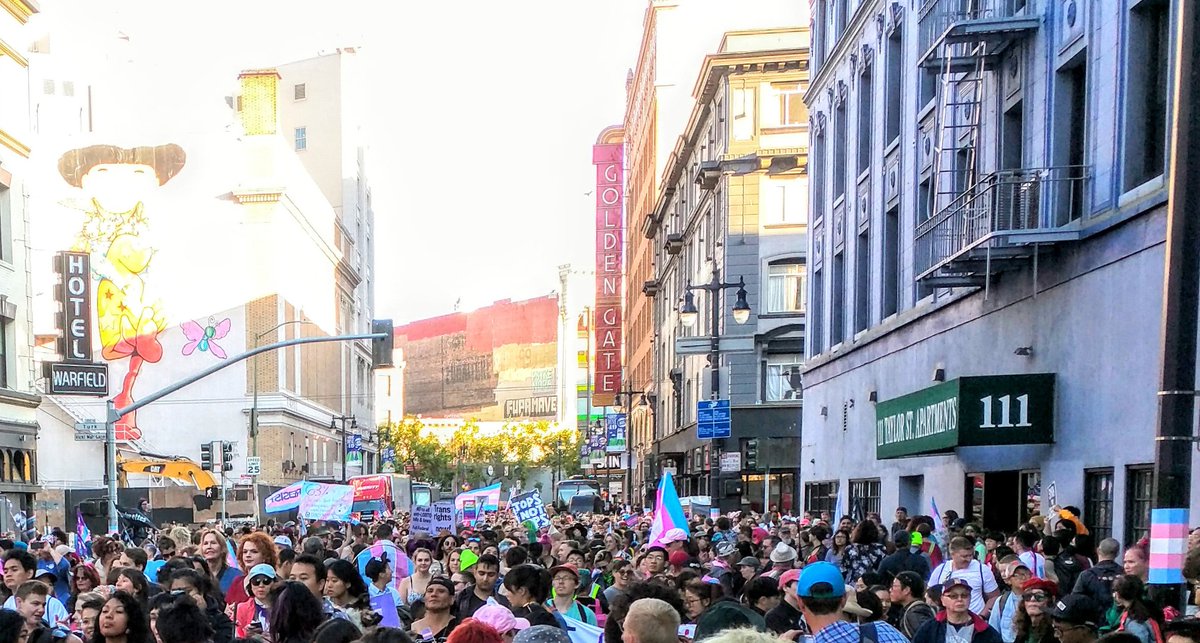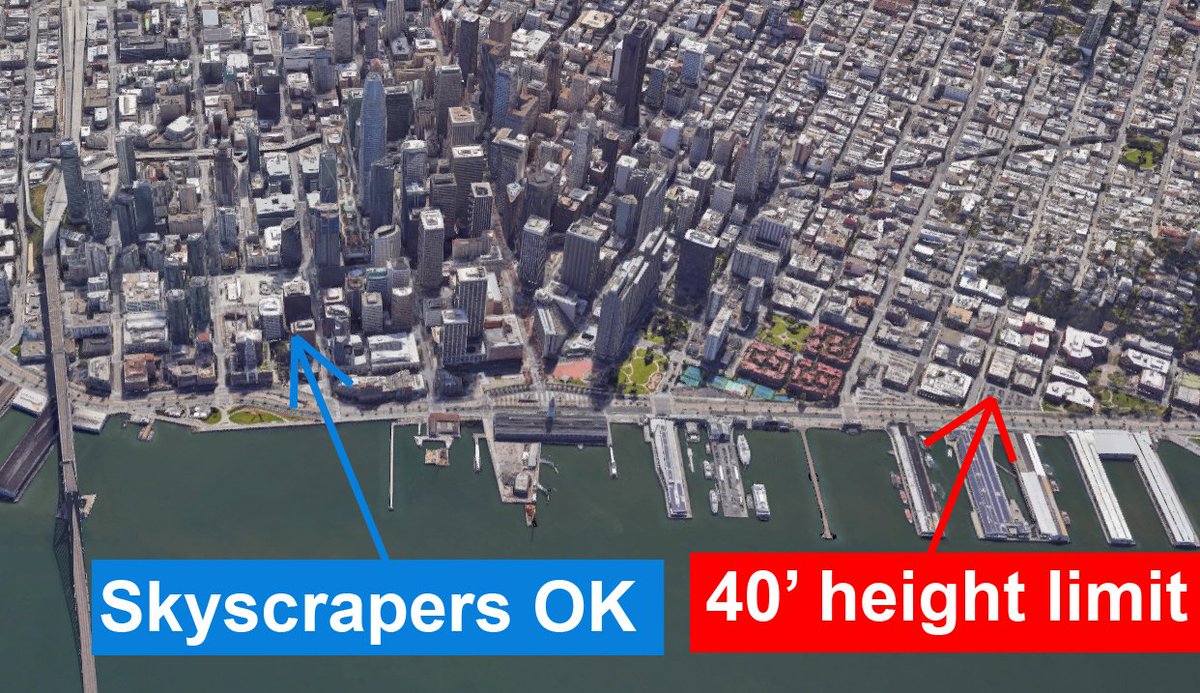Chinatown. The Tenderloin. SOMA. The Mission. These couple of square miles dominate the national housing discourse. Here YIMBY finds its biggest skeptics, & for good reason. Supply lowers rents regionally, but not within walking distance of the West Coast& #39;s largest downtown. 1/
As a whole, San Francisco is a rich city. But several of its densely populated inner neighborhoods are low income. Not unusual for American cities, but most places aren& #39;t adding thousands of $100,000 jobs every year. 2/
These inner neighborhoods are more than just homes, they& #39;re also the heart of regional and national communities. The combo of having a distinct community yet being close to the physical core made them engines of political power and economic mobility. 3/
Living near the centers of power is like having a seat at the table. Need to turn out a few dozen people for a protest or public hearing? Get politicians to make a campaign stop? It& #39;s much easier when your community lives within walking distance. 4/
A common debate is between tenant groups that want all new homes to be affordable housing, vs. YIMBYs that want to get the highest number of affordable units. For example, a 50 unit all-affordable building vs. a privately funded 400 unit building with 100 affordable units. 5/
A concern is that while more housing can be provided by adding floors, there& #39;s still only going to be one ground floor for the retail. Guess what kind of retail a building that& #39;s 75% high income is going to have? 6/
So, how can SF meet housing demand in inner neighborhoods w/o causing gentrification?
1) Build as much as possible in other places near downtown, such as the Transbay District or Telegraph Hill.
2) Rent control / nonprofit purchase of bldgs.
3) Mixed income social housing. 7/
1) Build as much as possible in other places near downtown, such as the Transbay District or Telegraph Hill.
2) Rent control / nonprofit purchase of bldgs.
3) Mixed income social housing. 7/
Freeway removal and deindustrialization left plenty of empty lots along San Francisco& #39;s downtown waterfront. South of Market, thousands of new homes are built every year. North of Market, we still got surface parking lots where the height limit is 4 stories. 8/
Rent control keeps rents & the cost to buy a building low, however, many still fall into the hands of flippers who can get their financing faster than nonprofits. The new Community Opportunity to Purchase Act changes that. https://sfmohcd.org/community-opportunity-purchase-act-copa">https://sfmohcd.org/community... https://twitter.com/matias_kaplan/status/1198130244231688192">https://twitter.com/matias_ka... 9/
San Francisco& #39;s Community Opportunity to Purchase Act (COPA) program gives nonprofits both the right of first offer and a right of first refusal, as well as several weeks to put together financing. https://sfmohcd.org/sites/default/files/Documents/MOH/COPA/COPA%20-%20Final%20%20Program%20Rules-09-03-2019.pdf">https://sfmohcd.org/sites/def... It went into effect 6/3/2019. 10/
As far as social housing goes, one proposal is the SF Community Housing Act @SFCHA2020. It would tax large corporations and use the money to build or acquire mixed-income housing. Some units in social housing would be market rate, providing additional subsidy. 11/

 Read on Twitter
Read on Twitter